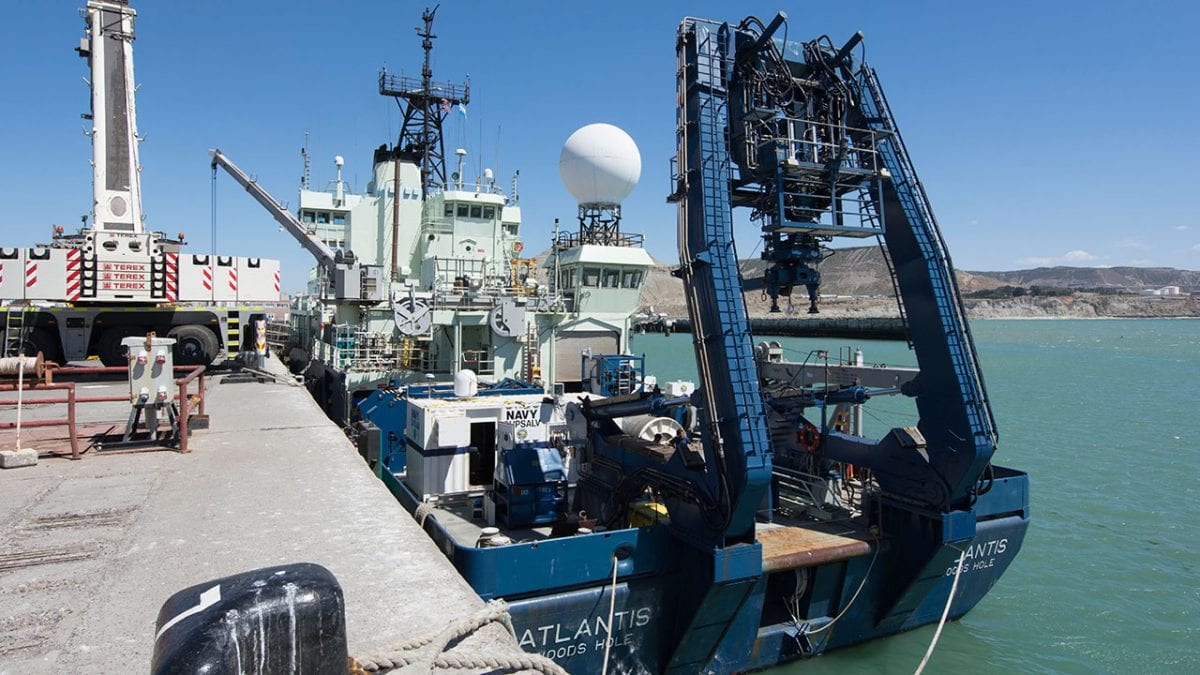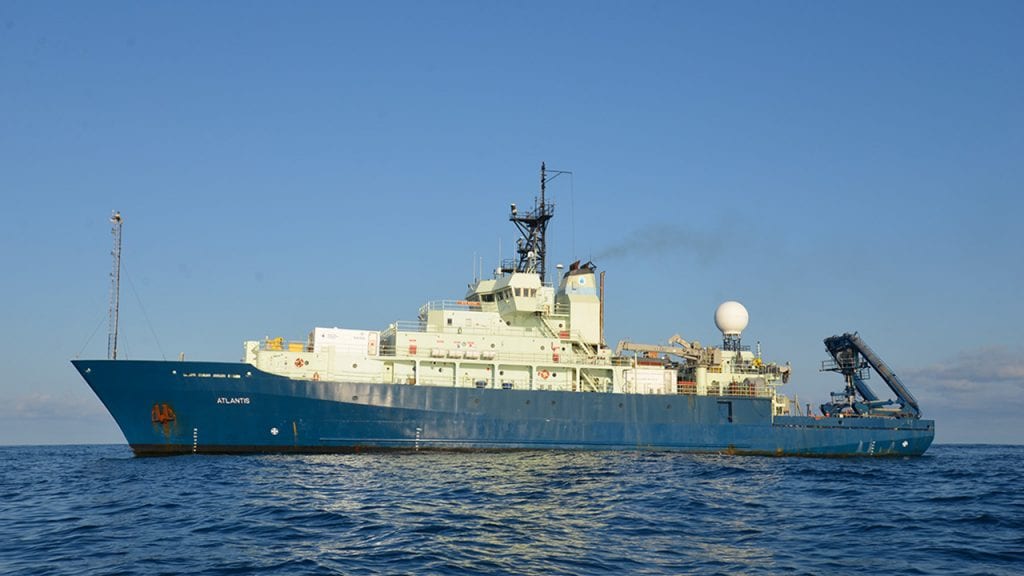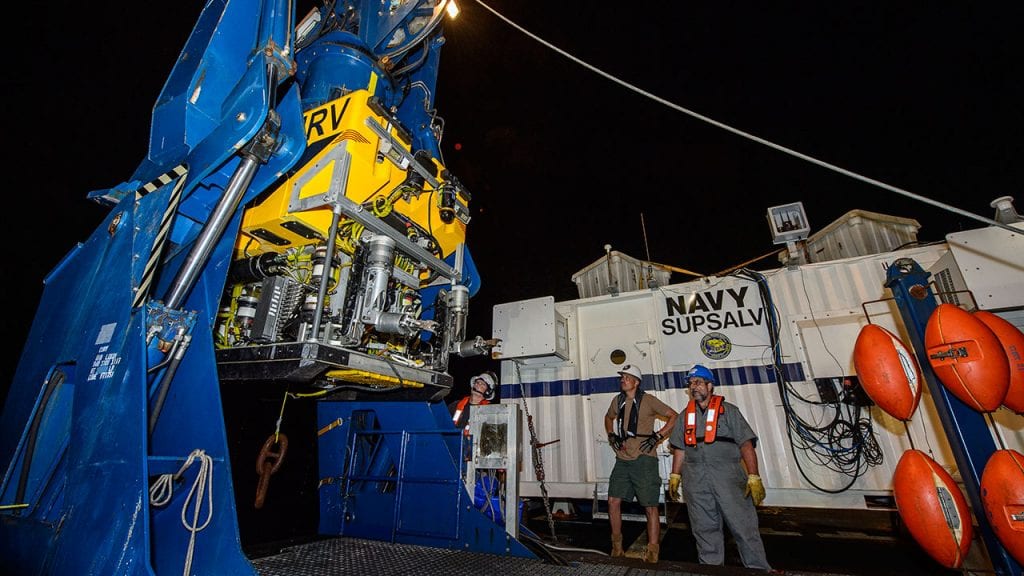WHOI Ship Atlantis Launches New Mission to Find Missing Argentinian Submarine
 The R/V Atlantis, a U.S. Navy owned research vessel, is loaded with the Cable-controlled Undersea Recovery Vehicle (CURV-21) in Comodoro Rivadavia on Dec. 4, 2017. The CURV is designed to meet deep ocean salvage requirements down to a maximum depth of 20,000 feet and will be used in support of the Argentine Navy search efforts of the ARA San Juan (S-42). (U.S. Navy photo)
The R/V Atlantis, a U.S. Navy owned research vessel, is loaded with the Cable-controlled Undersea Recovery Vehicle (CURV-21) in Comodoro Rivadavia on Dec. 4, 2017. The CURV is designed to meet deep ocean salvage requirements down to a maximum depth of 20,000 feet and will be used in support of the Argentine Navy search efforts of the ARA San Juan (S-42). (U.S. Navy photo) December 6, 2017
The U.S. research vessel Atlantis will launch a search-and-recovery mission for the missing Argentinian submarine ARA San Juan—equipped with a U.S. Navy remotely operated vehicle (ROV) flown down to Argentina.
Atlantis, operated by the Woods Hole Oceanographic Institution (WHOI), docked Dec. 2 in the Argentinian port of Comodoro Rivadavia to mobilize the U. S. Navy’s Cable-operated Underwater Recovery Vehicle (CURV) that was flown in from Dover Air Force Base in Delaware on Dec. 1. Since Nov. 21, Atlantis had joined a number of ships in the area in a search for the submarine, which went missing Nov. 15 with 44 crew members aboard. Atlantis will load CURV aboard and is scheduled to depart on its new mission on Dec. 7.
The 6,400-pound CURV is equipped with sonar to detect targets in the deep and high-resolution camera systems. It can dive to 20,000 feet and is controlled by a cabled tether that also transmits real-time data back to the ship. If the sub is located, the CURV will conduct a close-up inspection, document its condition, and perhaps find clues to determine the cause of the accident.
Atlantis has often been the platform to launch the WHOI-operated ROV Jason and is well suited to the task. “Atlantis is a very capable ship and has a very experienced crew for conducting complex underwater vehicle operations,” said Rob Munier, vice president for marine facilities and operations at WHOI.
Atlantis, which is owned by the U.S. Navy, was en route to a planned oceanographic mission in the South Atlantic when Navy officials diverted it to head to the area where last communications were received from the San Juan. The ship used its sophisticated multibeam sonar and an underwater communications system to search areas prescribed by the Argentinian Navy. Crew members monitored the equipment around the clock—work that was demanding and emotionally laden. The port stop allowed the ship to change crews, refuel, and load CURV and its containerized control room and accompanying equipment.
CURV will be operated by Phoenix International. Phoenix and WHOI have worked together before, including on a 2010 expedition to return to explore the wreckage of Titanic.
The Woods Hole Oceanographic Institution is a private, non-profit organization on Cape Cod, Mass., dedicated to marine research, engineering, and higher education. Established in 1930 on a recommendation from the National Academy of Sciences, its primary mission is to understand the ocean and its interaction with the Earth as a whole, and to communicate a basic understanding of the ocean’s role in the changing global environment. For more information, please visit www.whoi.edu.


